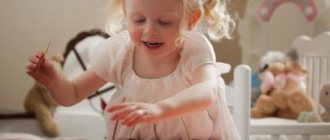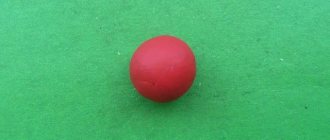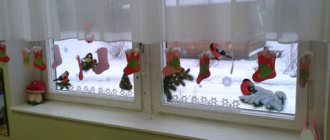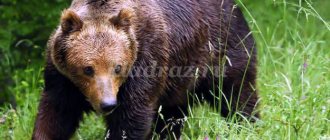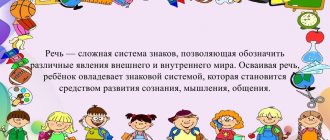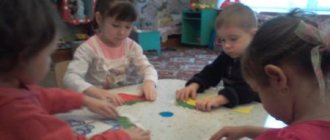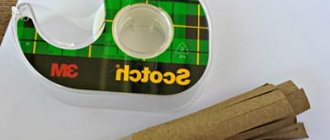Construction in an early age group
| Spring. Transformations, revitalization, awakening of nature. | |||||||||||||||
| 17 | 14.05 | Spring | Sand construction | Reinforce knowledge about the properties of sand. Learn to build a tower, a dog house, paths, benches, tables, etc. Develop thinking, memory, and creativity. Cultivate an interest in sand construction. | Sandbox | Cognitive development (formation of a holistic picture of the world, expansion of horizons, development of research activities, femp), speech development, hair (literary art), skr (s\r\i), physical | I.A.Lykova Design in kindergarten p.18 | ||||||||
| 18 | 28.05 | Flowers | Fences high and low | Teach: change the building in height; name the details: bricks, cubes; build a variety of fences, different in height. Strengthen the ability to arrange parts. Develop a sense of shape and color, an interest in flowers. To cultivate the ability to see the beauty of nature, understand its fragility, and evoke a desire to protect it. | Construction sets, decorative flowers on stands | Cognitive development (formation of a holistic picture of the world, broadening one’s horizons, development of cognitive and research activities, femp), hair (literary arts), physical development | I.A.Lykova Construction in kindergarten p.17 | ||||||||
Pedagogical monitoring is carried out in order to determine the dynamics of the child’s current individual development profile and is used to solve the following problems: • individualization of education (including supporting the child, building his educational trajectory or professional correction of his developmental characteristics); • optimization of work with a group of children. Pedagogical monitoring is based on the principles of supporting the specificity and diversity of childhood, as well as the uniqueness and intrinsic value of childhood as an important stage in the overall development of a person. In this regard, pedagogical monitoring: - does not contain any assessments of the child’s development related to recording educational achievements; — allows you to record the current individual development profile of a preschooler and evaluate its dynamics; — takes into account the child’s zone of proximal development in each direction; — allows us to consider the entire period of a child’s development from birth to school as a single process without conditional division into different age stages “tied” to the passport age, while taking into account age-related patterns of development, based on an assessment of changes in the activity of a preschooler; — takes into account the targets presented in the Program, but does not use them as the basis for their formal comparison with the actual achievements of children. Tools for pedagogical monitoring of child development - observation cards and an electronic application that will allow teachers to analyze the dynamics of child development. Where calculations are carried out using a certain formula. The results obtained are expressed as percentages and determine the so-called success rate of each child. At the beginning of the school year, based on the results of monitoring, the zone of educational needs of each student is determined: a high level corresponds to a zone of increased educational needs, a medium level corresponds to a zone of basic educational needs, and a low and low level corresponds to a risk zone. Accordingly, planning of the educational process is carried out based on the integration of educational areas, taking into account individualization. At the end of the school year, conclusions are drawn about the degree to which the educational needs of children are met and about the achievement of positive dynamics in the educational needs themselves. Principles of assessment - three-level monitoring system - 2 points “quality manifests itself sustainably”, 1 point “quality manifests itself unsustainably”, i.e. is in the zone of proximal development and is manifested only in joint activities with an adult, 0 point - “quality is not manifested.” In some cases (if necessary), psychological diagnostics of children can be carried out. It is carried out by qualified specialists (for example, educational psychologists) and only with the consent of the parents (legal representatives) of the children. The information obtained during monitoring is the basis for predicting activity, making the necessary correction, and a tool for notifying parents about the condition and problems identified in the child. Diagnostic card: Type of activity: Construction
Summary of a lesson in the first junior group on the topic “Construction from cubes”
Summary of educational activities in the first junior group “Tower for a cockerel”
Compiled by: Yanchenko Elena Anatolyevna, teacher of MBDOU “Kindergarten No. 11”, Seversk, Tomsk region. Goal: to form children’s ideas about cubes as parts of a construction set. Objectives: • develop productive (constructive) activities of children; • involve in the design of towers based on the model together with adults; • to form children’s ideas about the options for arranging parts on a plane (placing a cube on a cube); • develop manual skills and thinking; • develop children's active speech and ability to answer simple questions. Vocabulary: cube, tower, high, cockerel. Material: sample, 3 cubes for each child, cockerel - soft toy;
cockerel - a toy for playing with (according to the number of children). Progress of organized educational activities
1. Organizational moment The teacher brings a cockerel toy into the group. Educator: guys, look who came to us? (Children's answers.)
- That's right, it's a cockerel.
Say hello to the cockerel (Children say hello.)
Look how beautiful the cockerel is.
On his head he has a large red comb, a beard, eyes, and a beak. The cockerel has legs, wings and a tail. Next, the teacher and the children examine the cockerel. The tell-repeat-show technique is used. Educator: the cockerel is singing a beautiful song. How does the cockerel sing? (Children's answers.)
- That's right, the cockerel sings ka-ka-re-ku.
Let's all say together: cuckoo! - Guys, show how the cockerel flaps its wings (Children imitate the movements.)
The cockerels went for a walk in the group, beautifully flapping their wings, raising their legs high.
The outdoor game “Let's walk like cockerels” is performed. Educator: our cockerels were tired, they sat down on chairs to rest. The children sit at the tables. 2. Main part. Construction Educator: guys, the cockerel likes to sit high, look far away and sing a song loudly: ku-ka-re-ku! Let's build a tower for the cockerel so that our cockerel sits high and sings a song loudly. The teacher looks at the sample with the children.
Educator: look what a high tower I have. This tower is made of cubes. The cube stands on the cube. This is the kind of tower we will build. Look how I build a tower. I take a cube and put it on the table, I take another cube and put it on top of the cube, and I put another cube on top. This is the tall tower I ended up with. How did I build the tower? (Children's answers.)
- That's right, first I put one cube, then I put another cube on it, and another cube on top.
Now take the cube that is on your table and we will build a tower. Place the cubes carefully so that the tower does not fall apart. If necessary, the teacher helps the children and shows how to place a cube on a cube. Next, the teacher, together with the cockerel, examines the resulting towers and notes how beautiful, smooth, and tall they all are. The cockerel praises the children. 3. Summary The teacher gives the children small toys to play with - cockerels, and offers to play, for example: put the cockerel on the tower, walk around the tower and see how beautiful it is, etc.
Educator: these are the beautiful towers we have! - Guys, what did we build the towers from? (Children's answers.)
- That's right, we built towers from cubes.
How did we place the dice? (Children's answers.)
- Yes, we placed cubes exactly on cubes. We have a tall tower. Well done boys. Our cockerels are happy that they can now sit high and sing the song cuckoo-re-coo loudly!
We recommend watching:
Synopsis of an educational entertaining lesson for children of the first junior group Synopsis of an integrated lesson on the formation of elementary mathematical concepts using a synopsis of the educational situation in the 1st junior group Synopsis of a lesson in the first junior group. Construction from bricks
Similar articles:
Lesson summary for an early age group. Let's play with cubes
Lesson summary “Red color”. Junior group
Lesson summary “Yellow”. First junior group
Summary of a lesson in an early age group on the poem “The Dirty Girl”
Lesson summary for an early age group. Chicken and duckling
Summary of lessons on designing Teremok nursery
Abstract of GCD for the design of “Teremok”
Target
: developing children’s ability to create simple buildings in joint activities.
Tasks
educational activities:
continue to teach children to create a building from ready-made geometric shapes (bricks, cubes, roofs), analyze the object, see the main parts and details that make up the structure;
teach how to build a house according to conditions and models;
exercise the ability to distinguish and name geometric shapes: cube, roof, brick;
expand and enrich children’s vocabulary, strengthen dialogic speech skills;
develop design skills, spatial thinking;
cultivate independence;
develop coordination of hand movements, attention, thinking;
learn to differentiate the concepts of “big and small”;
cultivate a love for animals, develop cognitive interest;
create a joyful mood, an emotional mood.
Integration of educational areas:
“Cognition”, “Communication”, “Socialization”, “Work”, “Music”, “Reading fiction”.
Preliminary work:
reading Teremok fiction, looking at illustrations, constructing outside classes in subgroups and individually, looking at photographs of houses of different sizes, designs and purposes, consultations for parents.
Equipment:
wooden floor construction set, Lego construction set, plastic construction set, soft modules, diagrams, counting sticks.
Activating the dictionary:
brick, cube, door, walls, roof, window.
Progress of educational activities:
Surprise moment:
There is a knock on the door, a bear from the Russian folk tale “Teremok” comes in and cries.
Pedagogical technologies used:
• gaming
• information and communication
• personality-oriented
• health-saving
Artistic and aesthetic development:
• strengthen children’s ability to construct buildings according to a model and support the desire to build something on their own
• consolidate children’s knowledge of the names of construction kit parts
Speech development:
• develop dialogical speech
• cultivate interest in communicating with adults and peers
• activate nouns in the children’s dictionary (teremok, builder, little mouse, frog-frog, runaway bunny, top-gray barrel, little fox-sister, clumsy bear, verbs (lounged, galloped, roared, squeaked)
Cognitive development:
• maintain children's interest and active actions with objects and geometric bodies
• develop attention, thinking, sensory perception
Social and communicative development:
• cultivate friendly relationships during joint activities
MAGAZINE Preschooler.RF
Project in the first junior group “Magic cubes”Completed by: teacher Kornilova T.V. Municipal government educational institution kindergarten No. 9 “Solnyshko”, Chkalovsk 2020
Explanatory note:
Constructive activity is a practical activity aimed at obtaining a specific, pre-thought-out real product that corresponds to its functional purpose. design has extremely wide possibilities for mental, moral, aesthetic, and labor education.
Construction of various buildings from building materials for young children. During the construction process, children's sensory and thinking abilities are developed. Playing with building materials has an impact on the all-round development of the child. Children's construction is closely related to play: children's buildings are used for practical use and for play. In children aged 2–3 years, construction and play “nearby” .
A variety of building materials develops children's creative activity. Therefore, it is necessary to create the necessary conditions and select materials for the developing subject environment. You should consider placing a variety of building materials in the group room, placing it accessible so that it is convenient for children to play with it.
LEGO sets Builder set (cube, brick , cone, cylinder) are used. To play with buildings, you need toys that are commensurate with the buildings being created (cars, dogs, cats, nesting dolls, etc.).
Relevance:
The problem of developing interest in design in preschool children occupies a significant place in preschool pedagogy. Since a variety of constructive creativity gives children the opportunity not only to explore the world around them, but also to comprehensively develop their abilities.
The relevance of the problem of conducting design classes in preschool institutions is that at this stage of development of society, fewer hours are devoted to design for children to master than other disciplines (speech development, cognition, drawing, etc.)
Construction in the learning process is a means of deepening and expanding the acquired theoretical knowledge and developing the creative abilities, inventive interests and inclinations of students.
The purpose of the project: to develop the ability to carry out this or that construction, to know the names of buildings; develop the child’s thinking, intelligence and creativity, his moral qualities, aesthetic feelings.
Project objectives:
- Development of cognitive interest of preschool children in design.
- Formation of design skills and abilities, gaining first experience in solving design problems, getting to know designers.
- Development of creative activity, independence in making optimal decisions in various situations, development of attention, working memory, imagination, thinking.
- Development of fine motor skills and hand coordination in preschool children.
- Developing responsibility, discipline, and communication skills.
- Promote the formation of active speech.
The main form of training: directly organized educational activities.
Working methods and techniques:
- observation;
- sample display and analysis;
- explanation of the sequence and methods of construction;
- clarifications, questions;
- artistic word;
- gaming techniques;
- playing around with created buildings;
- analysis and evaluation of the work process.
Forms of organization:
- lesson in subgroups;
- individual work with a child;
- teamwork;
Project participants: children of the first junior group, teachers, parents.
Type of project: group.
Duration: 1 year
Expected results:
- The child shows initiative and independence in various types of activities - play, communication, construction; able to select participants for joint activities.
- The child has developed gross and fine motor skills; can control and control his movements.
- The child has developed a strong interest in design activities and a desire to experiment.
- The child masters the techniques of individual and joint design.
Plan
Stage 1 – preparatory.
Tasks:
- Study and selection of methodological literature on the topic of the project.
- Think over a system of activities with children of the first junior group to achieve the goals and objectives of the project.
- LEGO sets Builder sets (cube, brick , cone, cylinder, toys commensurate with the buildings being created (cars, dogs, cats, nesting dolls, etc.)
- stage – practical.
Tasks:
- Learn to name the parts of the LEGO construction set, continue to learn to name the parts of the “Builder” (brick, cube, cone, prism).
- Teach the simplest analysis of constructed buildings (identify the shape, size, color of details).
- Carry out the simplest design in accordance with the given conditions (bed for a doll).
- Compare objects by length and width.
- Enrich speech with phrases (the red track is long (wide).
- Design according to the sample and conditions.
- Distinguish by color and shape.
- Develop hand-eye coordination when connecting construction parts, achieve precision in the process of operational actions.
- stage – final.
Tasks:
- Observe whether the knowledge acquired by children during the project is reflected in independent activities.
- Summarize.
Literature:
- Arapova - Piskareva N. A. Formation of elementary mathematical concepts in kindergarten: program and method. recommendations. For classes with children 2 – 7 years old. – M.: Mosaika-Sintez, 2008.
- Gubanova N. F. Development of gaming activities. System of work in the first junior group of kindergarten. – M.: Mosaika-Sintez, 2008.
- Kutsakova L. V. Design and manual labor in kindergarten: program and method. recommendations. For classes with children 2 – 7 years old. – M.: Mozaika-Sintez, 2010.
- Lishtvan Z.V. Design. – M.: Education, 1991.
- Petrova V. A. Classes on speech development with children under three years old. – M.: Education, 1970.
- Chernova E.I., Timofeeva E.Yu. Finger steps: exercises for the development of fine motor skills. – St. Petersburg: Corona-century 2007.
Conclusions on the implementation of the project on design and modeling with children of early preschool age in the first junior group “Teremok”
Children transfer the knowledge and skills acquired in classes to independent activities.
In the first junior group, children play with parts that are familiar to them. It is very important that an adult takes direct part in children's games. To do this, I used such techniques as: reminding them of what we built earlier, how we played with buildings and toys, and inviting the children to repeat or change the building I made.
In the game, children improve, rebuild, and add various details to the same building over many days. When acting out the building, I suggested possible actions to the children or showed them how to do it. She made sure that the children handled the building material carefully and, at the end of the games, put it away in a permanent place.
It is necessary to notice successful buildings that a child has created by chance, to attract the attention of other children to them, and to praise the child for his independence and activity.
When children play with building materials, it is necessary to maintain good relationships between the kids: teach them not to disturb each other, share toys, and respond to a peer’s request.
As a result of the project, the child can:
know
- basic building parts (cubes, bricks , bridges, etc.);
- basic design techniques;
- primary colors.
be able to
- change buildings in two ways: by replacing some parts with others or building them up in height and length;
- connect LEGO pieces,
- play around with buildings.
have an idea
- about the simplest analysis of created buildings;
- about options for creating structures when adding other parts.
| Next > |
